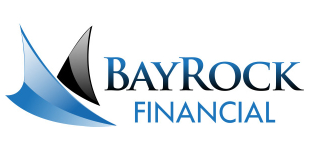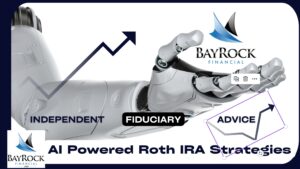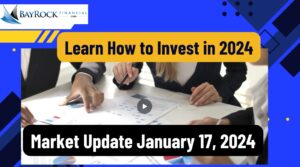Meet George the Investor
George is a successful business owner with $1,000,000 in cash to invest. Despite his substantial income, he wants to reduce his work hours to focus on family, travel, and ministry.
George has many aspirational goals but lacks a financial plan. His fear of market losses has led to missed investment opportunities.
Previously, he hired a Wall Street Advisor who charged a 2% management fee, but during the 2008 Global Financial Crisis George experienced a major loss in all of his accounts. That experience led to a distrust in financial advisors and avoidance of the market.
My First Wall Street Advisor experience was very similar to George’s story. My guess is that most investors who have ever worked with a Wall Street Financial Advisor have also had a similar experience to George’s story.
I was the first and only Certified Financial Planner Professional in the Houston area at State Farm. I began selling investments in 1997. Around 2007, my favorite State Farm mutual fund finally got around to adding real estate. Unfortunately this wasn’t until after the real estate sector had experienced massive gains.
Having Real Estate as an asset class in my favorite State Farm Mutual Fund made it even easier to sell. Yet, despite being a sales leader in Mutual Funds at State Farm, I lacked the expertise to manage an investment portfolio.
The Real Estate Bubble continued to expand. Nobody at State Farm warned me that the risk in my clients’ portfolios and in my own portfolio was also increasing a lot.
In December 2007, I hired a my first and only Wall Street Advisor to manage my life savings. He worked at Merrill Lynch as an employee of Bank of America.
My new Wall Street Financial Advisor charged me a 1.5% investment advisory fee. This, coupled with mutual fund fees, and other hidden fees at Merril Lynch totaled about 3.5% of my assets.
By mid-2008, I lost over 40% of my life savings prompting me to fire my Wall Street Financial Advisor.
I then retired as a State Farm Agent and went to work on Wall Street where I joined Morgan Stanley’s Wealth Management department.
After learning how things work on Wall Street, I went to work with 3 different Independent investment firms in the Houston area.
In 2019, after learning what I needed to learn about the Investment Management business, I founded BayRock Financial.
BayRock is an Independent Fiduciary Advisory Firm that offers Financial Planning and Portfolio Management. As the owner, I’m able to provide lower cost investment management, pricing transparency, and no hidden fees.
We typically charge 1% of Assets Under Management. Our investment focus includes keeping fees low, utilizing highly liquid and cost-efficient ETF strategies, and employing options strategies for better risk management. Our model portfolios are actively managed based on current economic and market conditions.
The Investor Onboarding process at BayRock is very different from what you get when you hire a Wall Street Advisor. At BayRock, we use a systematic Dollar-Cost Averaging approach for new clients like George.
Every investor at BayRock begins with a tailored Investment Policy Statement, regardless of asset size. At Morgan Stanley, I was only allowed to create an Investment Policy Statement for clients with over $10,000,000 in assets. Also, Wall Street Advisors don’t get paid until your money is invested.
At BayRock, new clients like George don’t get the same treatment my Wall Street Advisor gave me in December of 2007 when the markets were at or near all time highs.
My life savings were immediately put into high cost Mutual Funds so that my Wall Street Advisor and the Mutual Fund manager could get paid.
They got their fees up front based on the total amount of my life savings, before the 40% drop that came in 2008.
The BayRock Process includes three steps for new clients like George.
First, George completes a 5-minute Risk Survey to get his Risk Number.
Next, we craft an investment proposal for George, detailing risk, expected returns, expenses, and performance projections. We use the S&P 500 as a benchmark and we illustrate how George’s portfolio would perform in various market scenarios.
Finally, George receives key documents, including the Investment Policy Statement, Advisory Agreement, and access to our Financial Planning and Investment Management Portals.
The BayRock Portfolio Management process begins as soon as George becomes a client. George’s portfolio is created based on his Risk Number. We systematically invest his cash over several months. We will adjust the investment pace based on market movement.
The BayRock Financial Planning Process also begins when George becomes a client.
We start the planning process by conducting a Financial Planning Gap Analysis. We also coordinate with the other advisors working with our clients because we know that your CPA isn’t talking to your Family attorney. Your family attorney isn’t talking to your Insurance Agent. Your Insurance Agent isn’t talking to your Investment guy. And, your investment guy is usually talking to himself.
Our Financial Planning process includes retirement, estate, education, tax, and investment planning.
We provide ongoing review and monitoring which includes Cash Flow Management.
At BayRock, we offer Financial Planning and Portfolio Management. We work hard to simplify the process so that our clients experience more clarity, confidence, and contentment in their financial lives.
My goal as Director of Wealth Management at BayRock is to deliver Smarter Strategies and Better Results for our clients. Based on my experience on Wall Street at Morgan Stanley, I’m confident in our ability to achieve that goal.
During my advanced training at Morgan Stanley, I tried to use the same approach I use at BayRock. I’ve always tried to help clients connect their money with their purpose.
My professional training team at Morgan Stanley made it very clear that my approach would never work. Because, in order to keep my job at Morgan Stanley, I had to constantly increase my assets under management. To do that, I couldn’t waste my time on a warm and fuzzy process like the process we use at BayRock.
At BayRock, I have no pressure to sell anything. I love my job because I get to treat my clients the way I would want my Mom to be treated if she hired a Financial Advisor.
Thanks for watching. If you want to meet with me to talk about your financial future, it would be my pleasure.
Investment Proposal vs Investment Policy Statement
The main differences between an Investment Proposal and an Investment Policy Statement (IPS) are their purpose and timing in the investment process.
-
Purpose: To propose a specific investment strategy tailored to the investor’s goals, risk tolerance, and financial situation.
-
Content: Includes recommended asset allocation, potential investments, and projected outcomes.
-
Timing: Typically presented at the beginning of the advisor-client relationship or when significant changes in the client’s situation occur.
Investment Policy Statement (IPS):
-
Purpose: To provide a long-term framework for the investor’s overall investment strategy.
-
Content: Outlines investment goals, risk tolerance, asset allocation guidelines, and monitoring procedures.
-
Timing: Created after the initial investment strategy is agreed upon; serves as a guiding document for ongoing investment decisions.
Usage for Investor’s Benefit:
-
Investment Proposal: Used when establishing or adjusting an investment strategy, allowing the investor to make informed decisions about proposed investments.
-
IPS: Used as a continuous reference point to ensure that investment decisions remain aligned with the investor’s long-term objectives and risk tolerance.
Each document plays a critical role in effective investment management, with the proposal focusing on initial strategy formation and the IPS providing ongoing guidance and stability.
Investment Policy Statement
In my role as a CFP® Professional and Director of Wealth Management at BayRock Financial, integrating the concept of an Investment Policy Statement into my Financial Planning Process significantly enhances my clients’ understanding of investment management.
The Investment Policy Statement aligns with my goal of providing excellent financial education, as it encapsulates essential principles of risk management, goal setting, and strategic investment planning.
Investment Policy Statement for George The Investor
The Investment Policy Statement (IPS) for George Washington, prepared by Jim Munchbach, CFP® of BayRock Financial, is a comprehensive document designed to outline the investment goals and strategies for George’s portfolio. Here’s a summary of its key components and benefits:
-
Introduction and Purpose: The IPS establishes a clear understanding of investment goals and policies between George Washington (client) and BayRock Financial.
-
Investment Objectives and Guidelines: It sets forth objectives and guidelines for investing George’s assets, including risk tolerance, asset allocation, and investment strategies.
-
Risk Tolerance: The document specifies George’s risk number and comfort zone for potential gains and losses, ensuring investments align with his risk appetite.
-
Investment Goals: Retirement is identified as the primary goal, emphasizing the importance of keeping the financial advisor updated on any changes in objectives.
-
Asset Allocation: The IPS details current and target asset allocations, defining how George’s portfolio is distributed across various asset classes like stocks, bonds, and cash.
-
Stress Testing: Various market scenarios are tested against George’s portfolio to anticipate performance in different economic conditions.
-
Rebalancing Procedures: Guidelines for rebalancing the portfolio to align with the original asset allocation are provided.
-
Duties and Responsibilities: The roles of both the financial advisor and the investor (George) are clearly outlined.
Download the Reports
Investment Proposal Report Download – Click Here






